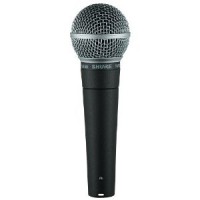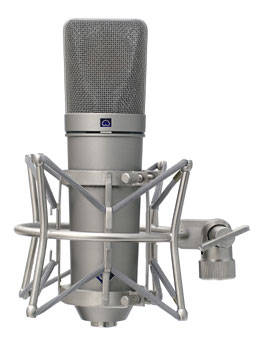VAM 012 | Microphone Basics, Part 2 – Pickup Patterns
Welcome to episode 12 of the Voice Acting Mastery podcast with yours truly, Crispin Freeman!
As always, you can listen to the podcast using the player above, or download the mp3 using the link at the bottom of this blog post. The podcast is also available via the iTunes Store online. Just follow this link to view the podcast in iTunes:
http://www.voiceactingmastery.com/podcast
In this episode, I continue my explanation of microphone basics. Specifically, I talk about the directionality or “pickup pattern” of a microphone.
As little as 5 or 10 years ago, no voice actor needed to understand any of the details of how or why a microphone worked. However, in order to be competitive in today’s market, every voice actor is expected to have their own home recording studio. That means that you need to be able to produce professional sounding tracks yourself. It’s vital, therefore, to understand some of the basic attributes of microphones and how they function so that you can sound as good as possible.
The directionality or pickup pattern of a microphone refers to how that mic treats sounds coming at it from different directions. Does the microphone capture all sounds equally from all directions, or does it prefer sound from one direction and reject sound from other directions? All microphones break down into two types:
- Omnidirectional Microphones
- Unidirectional Microphones
There are many different types of unidirectional mics, but the most common used in voice over uses a cardioid polar pattern. It’s named that because it favors sound from the front, but rejects sound from the rear. This creates a polar pattern graph that looks “pinched off”, almost like an upside-down heart. Another common pattern is the “shotgun” pattern that’s used for recording actors at a distance on TV and movie shoots.
Here are some pictures of the three polar patterns I mention in the podcast:
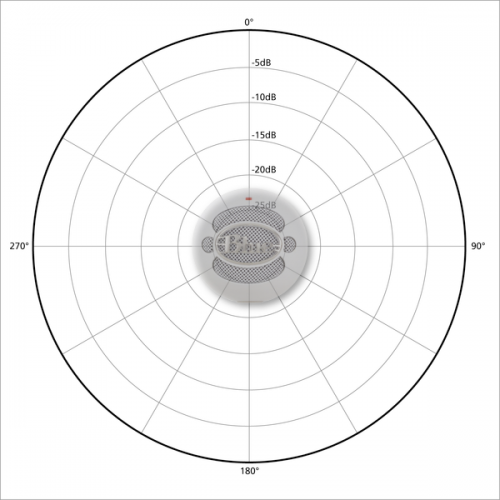
Omnidirectional Polar Pattern
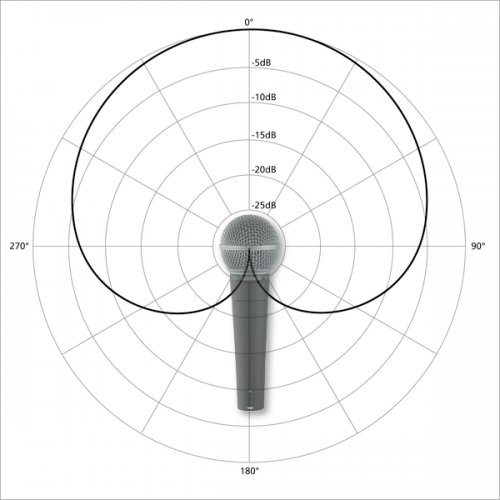
Cardioid Polar Pattern
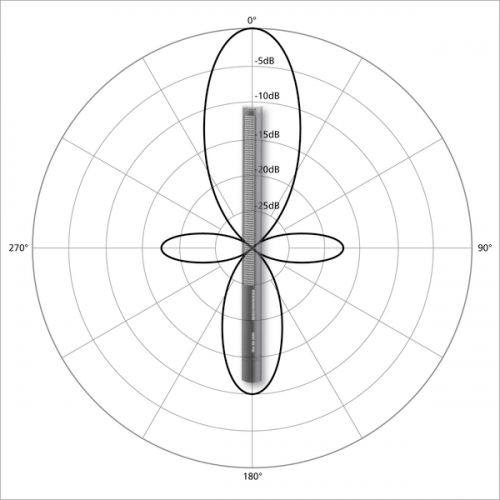
Shotgun Polar Pattern
All unidirectional mics, including the cardioid and shotgun patterns, also exhibit a behavior where the closer a vocalist gets to the microphone, the more bass or low frequency sound is recorded. This bass buildup is called Proximity Effect and can be used to create different effects when recording. I discuss all these topics at great length in the podcast. I hope you enjoy it!
If you have any questions, please post your question as a comment to this blog post. Chances are, someone else has a similar question. By posting your question here on the blog, I get to communicate with all of you at once.
Thanks for listening!
Download Voice Acting Mastery Episode #12 Here (MP3)
Voice 123 Auditions
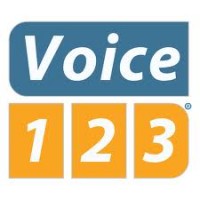 One of the new business models that the internet has made possible is what is known as the “Pay to Play” voice over casting website. Traditionally, a voice actor would pursue representation with an agent who would submit that actor for projects. If the actor was cast, the agent would take a 10% commission of the actor’s salary as compensation. Agents are not paid ahead of time, they only make money when the actor makes money.
One of the new business models that the internet has made possible is what is known as the “Pay to Play” voice over casting website. Traditionally, a voice actor would pursue representation with an agent who would submit that actor for projects. If the actor was cast, the agent would take a 10% commission of the actor’s salary as compensation. Agents are not paid ahead of time, they only make money when the actor makes money.
Pay to Play sites work differently. You pay the website a fee to get access to auditions. They give you space on their site to create a profile where you can post your demo and contact information. Then, you get access to auditions from producers who post their projects on the website. I have yet to try any Pay to Play sites so I don’t know what it’s like working with them first hand. My agent keeps me pretty busy so I haven’t explored that avenue yet. I’ve heard from other voice actors who have tried these sites that they can sometimes be a bit of a meat market with hundreds if not thousand of voice actors all competing for the same projects. However, this blog post caught my eye.
It’s a promotional blog post from Voice123, one of the larger Pay to Play sites. The post is called, Voice Overs Never Cease to Amaze Me. The post is designed to promote the ease of hiring their talent to those producers who are interested in using their service.
However, the most interesting part of the post to me is not the video of the final project with voice over, but rather the fact that they posted all the auditions for the project on a separate page for everyone to listen to. Rarely do you get the chance to hear other actor’s auditions for a part. In fact, it’s considered very bad form to allow other actors to hear their competition’s auditions. Since this blog post is aimed at the producer, however, Voices123 thought it would be good to showcase the type of talent that would audition for a project posted on their site.
So take advantage of an opportunity that almost never happens in voice over, listen to the auditions of your competition. Imagine if you were the producer, which talent would you chose? Do you agree with their choice? Why do you think the producer chose the actor he did? How could you audition differently to stick out from your competition? It’s a wonderful window into the voice casting process.
VAM 011 | Microphone Basics, Part 1 – Dynamic vs. Condenser
Welcome to episode 11 of the Voice Acting Mastery podcast with yours truly, Crispin Freeman!
As always, you can listen to the podcast using the player above, or download the mp3 using the link at the bottom of this blog post. The podcast is also available via the iTunes Store online. Just follow this link to view the podcast in iTunes:
http://www.voiceactingmastery.com/podcast
In this episode, I explain the basics of how a microphone works. I also outline the differences between the two dominant types of microphones in voice acting, dynamic and condenser microphones.
Historically, microphone technology was the responsibility of the recording engineer. It used to be that you could spend your entire voice acting career not knowing how a microphone worked as long as you knew which side of it to talk into. Those days are now gone. In the age of the internet, voice actors are expected to be able to make professional quality recordings from their home studios. A solid understanding of microphones and how they function is invaluable to understanding how to use the most important tool a voice actor has.
While there are many different types of microphone technology, there are two that have become dominant in the world of voice over:
- Dynamic Microphones
- Condenser Microphones
Here are some pictures of the two microphones I mention in the podcast, the Shure SM58 Dynamic microphone and the Neumann U87 Condenser microphone:
Shure SM58 – Dynamic
Neumann U87 – Condenser
If you have any questions, please post your question as a comment to this blog post. Chances are, someone else has a similar question. By posting your question here on the blog, I get to communicate with all of you at once.
Thanks for listening!
Download Voice Acting Mastery Episode #11 Here (MP3)
Interview with Nolan North
Here’s a wonderfully frank and candid interview with my friend, and voice acting superstar, Nolan North. Nolan and I have worked on a number of projects together, including the animated series Young Justice where he plays Superboy and I play Speedy who eventually becomes Red Arrow.
In this interview on Complex.com, Nolan talks about his experiences working on the Uncharted series of video games, the franchise people tend to associate him with the most. Nolan really embodies Nathan Drake and it’s a testament to the storytelling in the game that it’s been so popular for so many years.
What I really love about Nolan’s interview is his story of how he got in to the business. He says,
I eventually became an actor, starting with doing stand-up comedy in New York and then theater wherever they would let me. Finally, I moved out here to Los Angeles and got on a show. … For so long [my wife] put up with all my silly voices and accents and she kept hammering at me saying, “You got to get into voice over!” … I have to say that it is nice to be able to make a nice living doing what teachers gave me detention for in school [laughs].
Nolan just really enjoys playing with different character voices. It’s what makes him happy. That enthusiasm comes through, especially when you meet him in person. He also loves the anonymity that voice acting brings him. For him, his freedom is more important than anything else.
If you’re asking me what perk personally I have enjoyed, then I’d have to say that it’s the freedom. With success you make a better living, but money can’t buy happiness. The one thing it can buy in this industry, and I don’t make millions by any means, is freedom.
Nolan loves having his anonymity as a voice actor. No one bothers him on the street, he can go about his life without anyone looking over his shoulder, but he still gets to work on the characters and the stories that allow him to entertain people. I think there’s a lot to learn from watching someone who’s truly enjoying what they’re doing.
VAM 010 | How to Practice Voice Acting Anywhere
Welcome to episode 10 of the Voice Acting Mastery podcast with yours truly, Crispin Freeman!
As always, you can listen to the podcast using the player above, or download the mp3 using the link at the bottom of this blog post. The podcast is also available via the iTunes Store online. Just follow this link to view the podcast in iTunes:
http://www.voiceactingmastery.com/podcast
In this episode, I give practical advice on how to practice your voice acting skills no matter where you are.
So many of my listeners have told me how much they enjoy the podcast. Some listeners espouse a belief that because they’re not located in the right area that they are unable to improve their voice acting skills. I decided to dedicate this entire episode to giving you practical ideas about how to practice voice acting no matter where you’re located.
The truth of the matter is, if you really want to do something, nothing will stop you. This is true in all aspects of life. A burning desire to achieve a goal will inspire a resourcefulness in you that will surprise you.
One of the most important aspects is identifying yourself as a voice actor and then asking yourself a series of logical questions:
- I am a voice actor. What does a voice actor do?
- A voice actor acts. What is acting?
- Acting is playing pretend so believably that people will pay you to do it. How do you achieve that level of skill?
- By practicing. Where does one practice acting?
That is the question I spend most of the episode answering. There are all sorts of places you can practice your acting skills and I address many of them in this podcast including:
- Classes: High School, College and Community College
- Community Theater: Acting with a multi-generational troupe of performers is enlightening
- Online Voice Acting Communities: Websites where you can post your work and get feedback
- Individual Study: Mimicking other voice actors can help you expand your range
I’m sure many of you out there have even more ideas about how one can practice their voice acting no matter where you’re located. I look forward to your suggestions, advice and comments here on the blog!
If you have any questions, please post your question as a comment to this blog post. Chances are, someone else has a similar question. By posting your question here on the blog, I get to communicate with all of you at once.
Thanks for listening!
Download Voice Acting Mastery Episode #10 Here (MP3)

